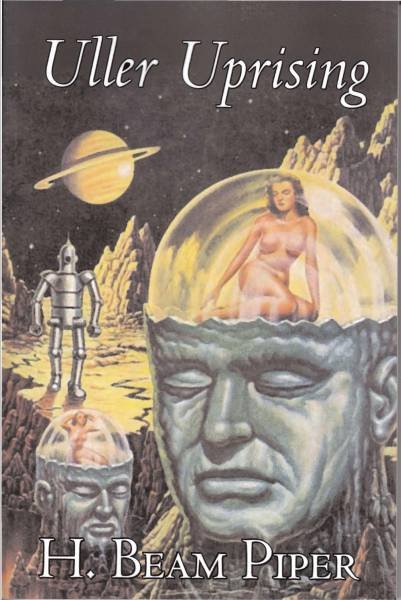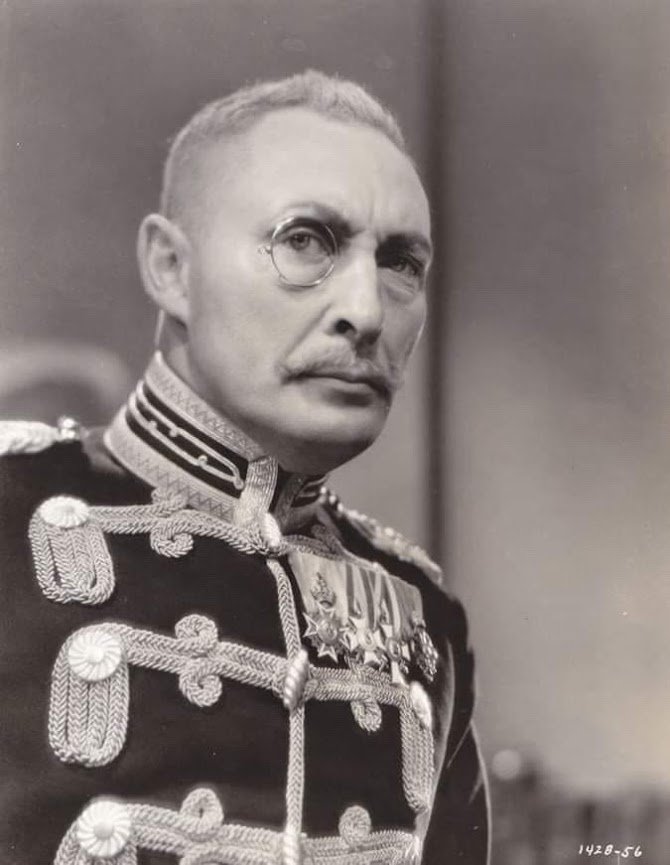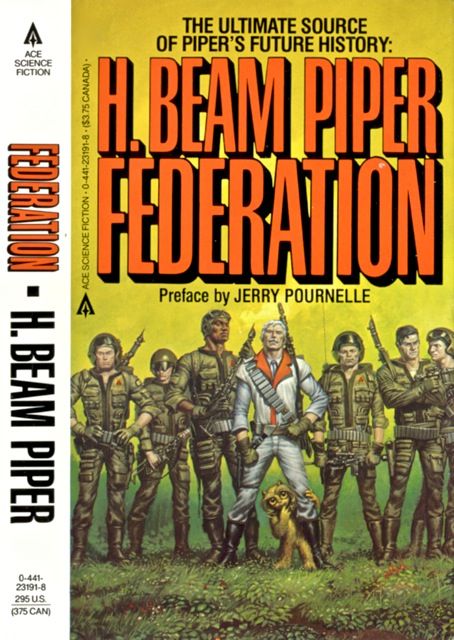Uller Uprising Book Review
Everytime I read a book by H. Beam Piper, I’m sorry I slept on it for so long. Uller Uprising is a tightly plotted tale inspired by, but not a retelling of, the Sepoy Mutiny of 1857. And it has a introduction of some of the hardest science I have seen even by the standards of mid-twentieth century scifi.

Uller Uprising by H. Beam Piper Twayne edition (1952)
I picked the cover image above because it is hilarious. While there are no scenes in the book that could plausibly be connected with this image, having beautiful women on the brain is not unrelated to the story. But we’ll get to that.
This particular edition of the story has its own interesting history. There is a shorter magazine version of Uller Uprising, but John F. Carr was able to photocopy one of the original print run of the longer novel and now we have an Ace paperback and this ebook edition. The original Twayne edition was a triplet called The Petrified Planet, with stories by Fletcher Pratt and Judith Merril. One of the best parts of the book is the original introduction, by Dr. John D. Clark, which sets out the astrogeology and evolutionary history of the planets in the book, and offers a surprisingly deep reflection on what is now a science fiction staple, life that uses silicon instead of carbon for organic chemistry.
Dr. Clark also tells us of an even more interesting world than Uller, with its silicon based life. Dr. Clark is perhaps best known for the book Ignition!: An Informal History of Liquid Propellants, and so perhaps can be forgiven for an obsession with things that go boom. Niflheim’s chemistry is driven by fluorine, rather than oxygen. If you know anything at all about fluorine chemistry, and I know a very little, fluorine and it’s compounds are aggressively corrosive and energetic, and sane people avoid them. Niflheim just happens to be a treasure trove of useful metals for a burgeoning interstellar civilization, and so a few unlucky souls labor there for the greater good of civilization.

How I imagined General Carlos von Schlichten
I couldn’t find the source of the photograph of the monocled gentleman above, but he seems like the kind of stock character who would play the commander of the corporate military on Uller, Carlos von Schlichten. General von Schlichten makes the acquaintance of Dr. Paula Quinton, an extraterrestrial sociographer, by rescuing her from a riot. You get the impression that putting down riots is SOP for the Uller mercenary forces, which probably should have been a warning sign.
von Schlichten and Quinton discover they both have family roots in Argentina, which gives Piper an opportunity to elaborate a bit on the backstory of what would eventually become his future history setting, the Terro-human future history.
“Well, another of my great-grandmothers was Japanese,” she replied. “The family name’s French. I’m also part Spanish, part Russian, part Italian, part English … the usual modern Argentine mixture.”
“I’m an Argentino, too. From La Rioja, over along the Sierra de Velasco. My family lived there for the past five centuries. They came to the Argentine in the Year Three, Atomic Era.”
“On account of the Hitler bust-up?”
Yes. I believe the first one, also a General von Schlichten, was what was then known as a war criminal.”
“That makes us partners in crime, then,” she laughed. “The Quintons had to leave France about the same time; they were what was known as collaborationists.”
The Terra of Piper’s future is a civilization of the Global South, a term he didn’t use, but that is the best current analogue of what he meant. However, despite the mix of ancestries that you can see in Dr. Quinton, or might guess from the names of General von Schlichten’s subordinates Themistocles M’zangwe and Hideyoshi O’Leary, the culture of Terra is very much that of the Anglosphere at the peak of its power and influence. The mix of can-do attitude, technical competence, and personal bravery is exactly what Tom Wolfe meant by The Right Stuff. This book is a prose poem to the drive and ingenuity that spurred these men to conquer the world.
The Sepoy Mutiny was a little before the period of time John J. Reilly called the Decisive Lifetime, roughly 1863-1940, but this book very much fits into the mode of a civilization at the peak of what it can achieve, and when it assumes the form that will define it for several centuries. Even though it was actually written a little after that peak had topped out, although that probably wasn’t as obvious in 1952 as it is in retrospect. This book and its inspiration might serve as bookends for the period it memorializes.
That period saw the maximum extent of the ambition that had begun nearly 500 years earlier, with Western Europe and its diaspora pulling most of the world into their sphere of influence, and creating the technologies that continue to be the foundation of the modern world. This was fostered by the creation of social technologies that maximized solidarity and mutual sacrifice for common goals. The combination of technical excellence and personal bravery you see in Carlos von Schlichten is the apogee of those social technologies.
Dr. Quinton too fits into this mold, following a blend of the social mores across the Decisive Lifetime for upper class women, being highly educated, and working in a demanding but probably not especially remunerative position with the Extraterrestrial Rights League, and performing admirably well when General von Schlichten conscripts her into military service for the duration of the emergency. Dr. Quinton challenges von Schlichten when she thinks he is being unjust or bloodthirsty, but is wholly on the human [and the Company’s] side, and throws herself into her duties.

How I imagined Dr. Paula Quinton
Under such intense circumstances, it is natural that feelings develop between Dr. Quinton and General von Schlichten, which is why the “women on the brain cover” is so funny. von Schlichten is motivated to protect and impress Dr. Quinton, but there isn’t any fundamental conflict between this and his professional duties. They in fact dovetail nicely. And while the cover of the book doesn’t quite match any particular scene in the book, there is this description of Dr. Paula Quinton during a brief introductory scene of Niflheim:
And a black-haired girl in a suit of coveralls three sizes too big for her, and apparently, not much of anything else, lounged with one knee hooked over her chair-arm, staring into the screen at the distant horizon.
Paula Quinton is not any more of an idealization than Carlos von Schlichten is, but I applaud Piper for his skill and imagination in making them more than idealizations. I quite liked both characters, and I recognized bits of them in people I’ve met, even if I’ve never met anyone with all of those traits at once.
It is all very much in the classical Campbelline mode of an adventure story that usefully educates the reader in some principles of science, but Piper adds in an element of political speculation as well. Not only is there an extended examination of the effects of the Human colonization on the Uller natives, but a bit of critical technical knowledge von Schlichten needs to win the war is only preserved due to a tawdry romance novelist with a penchant for absurd levels of historical detail. That Piper could successfully combine that with a distillation of the social ideals of the last five centuries is quite a feat.
I wish that Piper had lived longer, and written more books, but I’m grateful for the books that we have.
Other books by H. Beam Piper
Lord Kalvan of Otherwhen
Space Viking

Comments ()